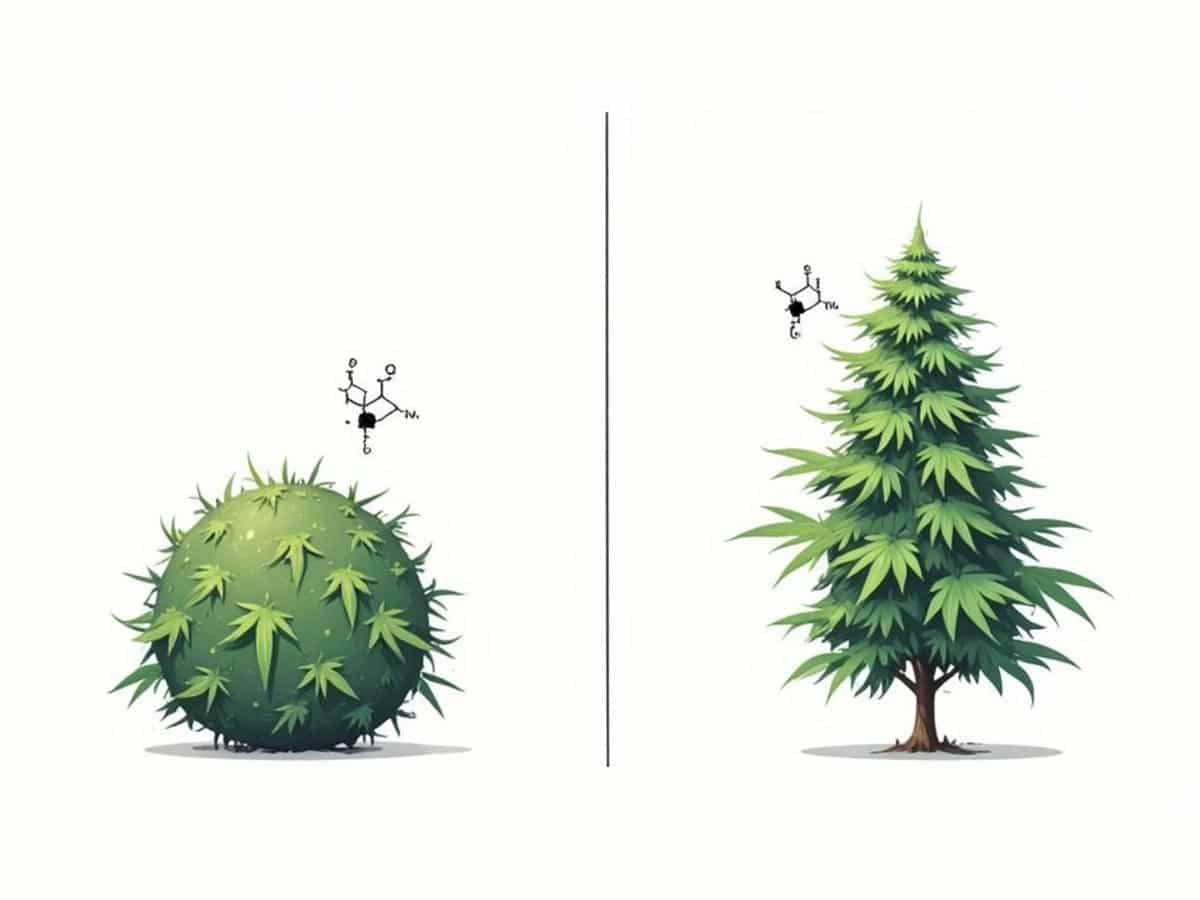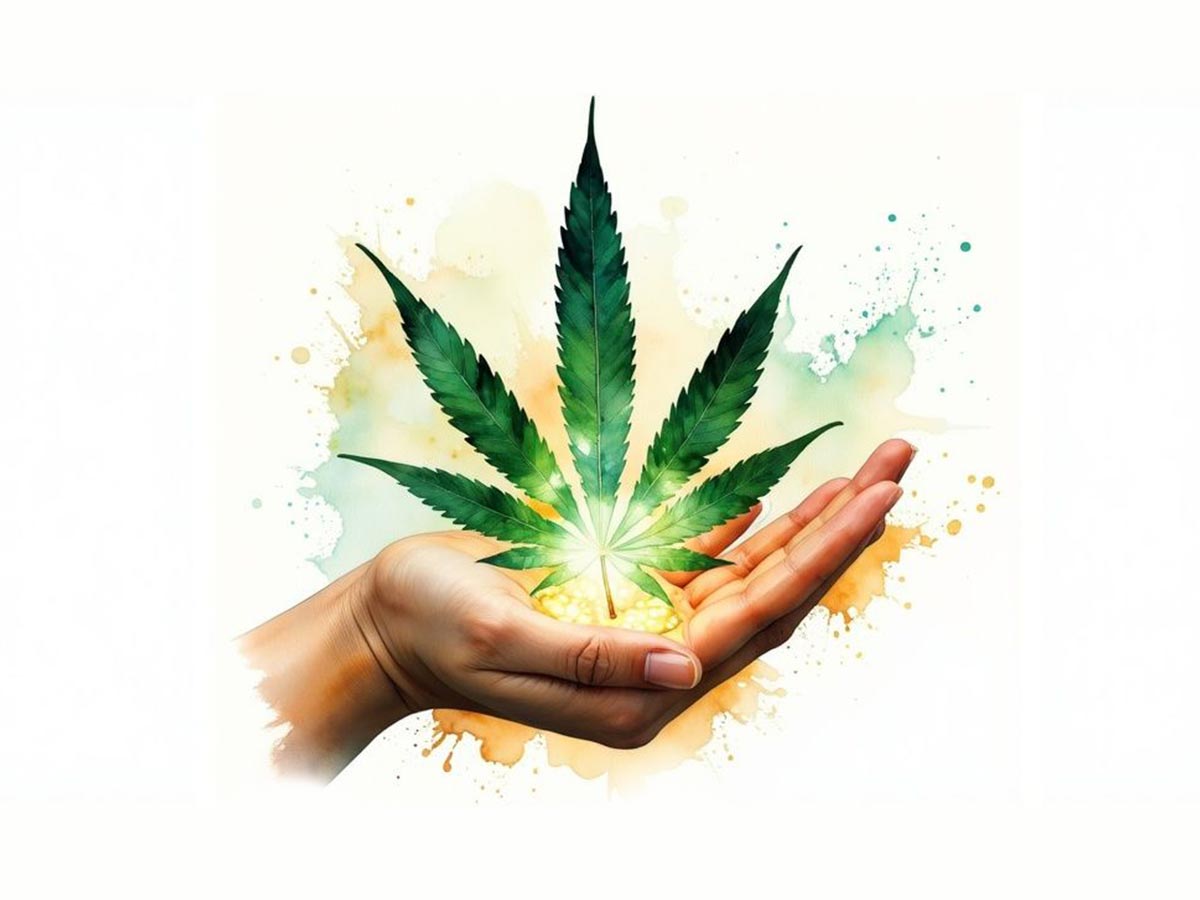When people talk about the difference between Indica and Sativa, they’re usually referring to the classic effects and how the plants grow. Traditionally, Indicas are known for a deep, full-body relaxation—that classic “in-da-couch” feeling. On the other hand, Sativas are famous for their uplifting, cerebral buzz that gets your creative juices flowing.
It’s a simple, neat distinction. But thanks to decades of cross-breeding, it’s not so black and white anymore. Think of these labels as helpful starting points, not unbreakable rules.
Understanding the difference between Indica Sativa
For years, the Indica vs Sativa model was the go-to framework for everyone from growers to consumers. It all started with simple observations of how these plants looked and where they came from. Geography and climate shaped them in very different ways. For example, a strain like Northern Lights is a classic Indica known for relaxation, while Jack Herer is a famous Sativa often used for creative energy.
But if you want to really know what to expect from a strain today, you have to look past the name. The real story is in its chemical makeup—the specific mix of cannabinoids and terpenes. That’s what truly dictates the experience.
We’ll dig into the key distinctions that matter most:
- Botanical Origins: How their native climates created two very different plants.
- Physical Appearance: The tell-tale signs you can see with your own eyes.
- Chemical Composition: A look under the hood at the compounds that create the effects.
- Reported Effects: The classic “head high” vs. “body high” debate.
- Ideal Use Cases: Practical advice on picking the right strain for the right moment.
This image from Wikipedia’s entry on Cannabis Indica does a great job showing the classic plant structures side-by-side.
You can immediately see the difference. The Indica is a short, stocky plant with wide, fat leaves, perfectly built for its harsh mountain environment. The Sativa, in contrast, is tall and lanky with skinny leaves, adapted for life in humid, sunny climates.
To kick things off, let’s start with a quick rundown of the traditional traits that have shaped the whole Indica vs. Sativa conversation.
Traditional Indica vs Sativa At a Glance
This table sums up the classic wisdom. It’s a great reference point, but remember, modern hybrids often blur these lines.
| Characteristic | Indica | Sativa |
|---|---|---|
| Typical Effects | Relaxing, Sedating, “Body High” | Uplifting, Energizing, “Head High” |
| Plant Appearance | Short, bushy with broad leaves | Tall, slender with narrow leaves |
| Best For | Nighttime use, relaxation, sleep | Daytime use, creativity, social events |
| Common Terpenes | Myrcene, Linalool, Caryophyllene | Limonene, Pinene, Terpinolene |
| Geographic Origin | Hindu Kush region (harsh, dry climates) | Equatorial regions (hot, humid climates) |
While this is a solid foundation, the real magic—and the key to finding what works for you—is in the chemistry. The combination of cannabinoids and terpenes is what truly creates a strain’s unique personality.
Tracing the Botanical and Geographic Origins
To really get to the heart of the Indica versus Sativa debate, we have to go back to where it all started. The unique traits we see in these two cannabis types aren’t just random quirks; they’re the direct result of adapting to very different corners of the world over thousands of years. It’s a classic story of evolution shaping a plant’s very nature.
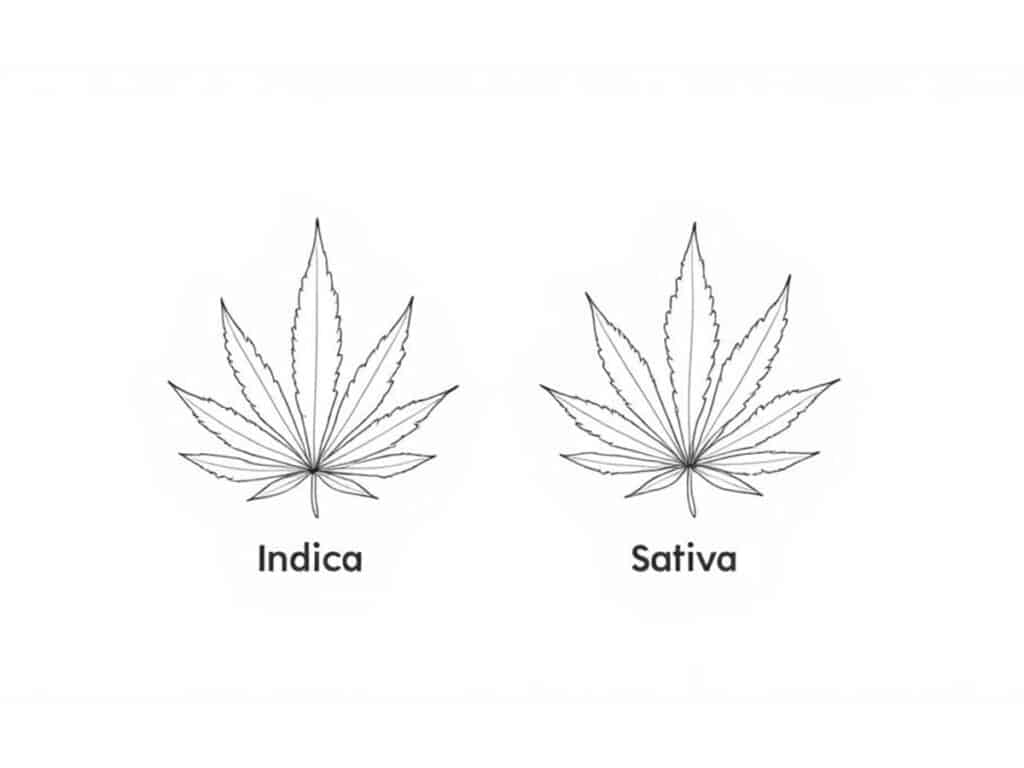
Picture the rugged, unforgiving landscape of the Hindu Kush mountains, a vast range crossing through Afghanistan and Pakistan. This is the original home of Indica. The climate is brutal—short summers, harsh sun, and unpredictable weather. To survive, Cannabis indica had to become a tough, compact plant.
The Hardy Mountain Survivor: Indica
Indica plants adapted by staying low to the ground and growing bushy, usually only reaching 2 to 4 feet tall. Their leaves are famously broad and dark green, a clever design to soak up as much sun as possible during a brief growing season while preventing water loss in the dry, windy air.
This difficult environment also put them on a tight schedule. Indicas developed a much faster flowering cycle, typically finishing up in just 6 to 9 weeks. This speedy turnaround meant they could create seeds before the first frost hit, guaranteeing the next generation. It’s a beautiful example of survival, leading to the dense, sticky buds that Indicas are prized for.
The Sun-Kissed Tropical Native: Sativa
On the complete opposite side of the spectrum, Cannabis sativa came from the warm, humid regions near the equator. We’re talking about places like Southeast Asia, Central America, and Africa, where sunshine is plentiful and the growing season feels like it lasts forever.
With no pressure to race against the clock, Sativas could afford to take their time. They grew tall and lanky, sometimes stretching up to an incredible 5 to 18 feet or more as they reached for sunlight in crowded, lush environments. Their leaves are long and skinny—often called “finger-like”—which is perfect for promoting airflow and preventing mold in muggy conditions. The entire history of these plants is written in their geography, and you can explore more about their evolutionary paths over at CBD Alchemy.
These environmental pressures are the fundamental reason for the classic physical differences we observe. An Indica’s short, dense structure is a direct response to a short, harsh summer, while a Sativa’s tall, airy frame is a product of long, sunny, and humid days.
Understanding where these plants came from gives us crucial context. The very traits that helped them thrive in the wild are the same ones growers manage today. This botanical history is the foundation for every modern strain, shaping everything from how they’re grown to the final experience they deliver.
Decoding the Chemical Profile of Each Strain
While a plant’s origin story and physical appearance offer some interesting clues, the real difference between Indica and Sativa is written in their chemistry. The effects you feel come down to a complex cocktail of compounds, mainly cannabinoids and terpenes. Getting to know these components is the secret to figuring out how any given strain will affect you.
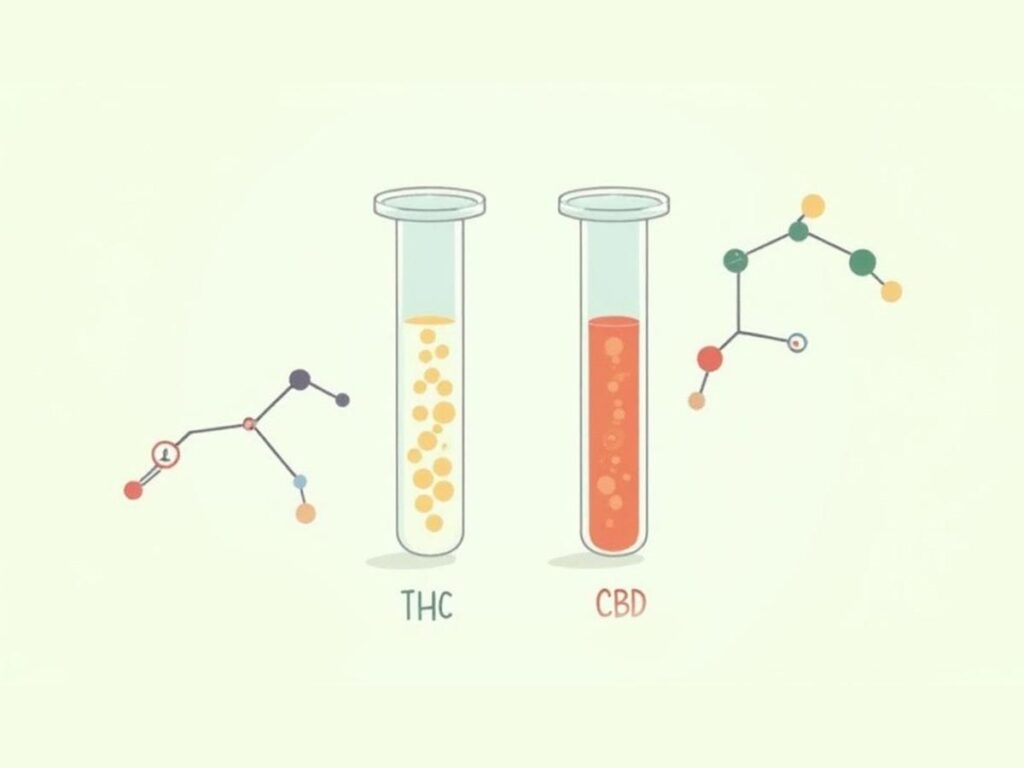
The two big names in the cannabinoid world are THC (tetrahydrocannabinol) and CBD (cannabidiol). THC is the one responsible for the psychoactive “high,” while CBD is non-intoxicating and celebrated for its therapeutic benefits. For a long time, the Indica vs. Sativa label was just a simple shorthand to guess which cannabinoid was in the driver’s seat.
Cannabinoids: The Building Blocks of Effects
Historically, Sativa strains were the high-THC, low-CBD powerhouses that delivered that classic energetic, cerebral buzz. This biochemical profile is exactly why Sativas became the go-to for creativity and focus. On the flip side, Indica strains were thought to have a more balanced ratio, often with higher levels of CBD working alongside THC.
This cannabinoid balance is what gives Indicas their famous relaxing “body high.” The fundamental pharmacological difference was always thought to be in these concentrations—Indicas leaning toward more CBD for calm, and Sativas pushing THC for a stimulating ride.
Terpenes: The Aromatic Directors
But cannabinoids are only half the picture. The true artists of the cannabis experience are terpenes—the aromatic compounds that give each strain its unique scent and flavor. Think of the sharp citrus of a lemon or the deep, earthy smell of a pine forest. That’s all terpenes.
Terpenes do a lot more than just smell nice. They work hand-in-hand with cannabinoids in a process called the “entourage effect.” This teamwork means terpenes can actually tweak, enhance, or even tone down the effects of THC and CBD, making every strain’s experience totally unique.
A good way to think about it is to imagine THC as the engine of a car and terpenes as the steering wheel. The engine gets you going, but the terpenes decide where you end up.
Here are a few key terpenes you’ll run into:
- Myrcene: This is the big one in classic Indica strains. It has an earthy, musky aroma and is closely tied to sedative, relaxing effects. If you’ve ever felt “couch-lock,” you can probably thank myrcene.
- Limonene: Just like it sounds, this terpene smells strongly of citrus. It’s a common feature in Sativa-dominant strains and is often associated with lifting your mood and melting away stress.
- Caryophyllene: With a spicy, peppery scent, caryophyllene is a standout. It’s unique because it also acts like a cannabinoid, interacting directly with our body’s endocannabinoid system. It’s best known for its anti-inflammatory properties.
By looking at a strain’s complete chemical fingerprint—both cannabinoids and terpenes—you can finally move past the simple Indica/Sativa labels. This holistic view, which is the whole idea behind full-spectrum cannabis products, gives you a much more reliable map to the kind of experience you’re really after.
Comparing Real-World Effects and Experiences
This is where the science meets the feeling. All the talk about chemical profiles and plant shapes really comes down to one thing: how will it actually make you feel? The difference between Indica and Sativa truly comes to life in the experience, and while modern hybrids have blurred the lines, the classic effects are still a great starting point.
The most straightforward way people have described this for decades is the “head high” versus the “body high.” It’s a simple comparison, but it perfectly captures the core of what you can generally expect.
The Classic Indica Body High
When someone mentions an Indica experience, they’re almost always talking about a deep, profound sense of physical relaxation. Think of a warm, heavy sensation that starts in your limbs and just washes over your entire body, melting away the day’s tension.
It’s this deep muscle relaxation that leads to the famous “in-da-couch” feeling. Here are a few real-world scenarios where an Indica might be the perfect fit:
- Winding Down After Work: There’s nothing quite like it for decompressing after a long, stressful day.
- A Quiet Night In: It’s the perfect companion for getting lost in a movie, sinking into a good album, or just enjoying a peaceful evening at home.
- Enhancing Appetite: Many people find Indicas really kickstart their appetite, making them a great lead-in to a delicious meal.
The Quintessential Sativa Head High
On the flip side, the Sativa experience is almost entirely cerebral. People often report an energetic, uplifting buzz that feels like it’s sparking creativity and making conversation flow. Instead of feeling weighed down, you might feel light, focused, and ready to engage with whatever is in front of you.
This mental stimulation makes Sativas a go-to for daytime activities. You might reach for a Sativa when you’re:
- Diving into Creative Pursuits: Artists, writers, and musicians often find Sativas help them find a new perspective or break through a creative block.
- Heading to Social Gatherings: The talkative, euphoric effects can make parties and get-togethers feel more lively and engaging.
- Tackling Outdoor Adventures: A Sativa could be just the thing for a weekend hike, a bike ride, or even just powering through household chores with a bit more enthusiasm.
The chart below gives a great visual snapshot of these classic reputations, rating each for its typical sedative and stimulating properties.

As you can see, Indica leans heavily toward sedation while Sativa dominates the stimulation side, reinforcing their traditional roles in the cannabis world.
To help clarify these distinctions, here’s a quick-glance table breaking down the most commonly reported effects.
Commonly Reported Effects Indica vs Sativa
| Effect Type | Indica-Dominant Strains | Sativa-Dominant Strains |
|---|---|---|
| Primary Sensation | Full-body relaxation, often described as “heavy” or “deep.” | Cerebral stimulation, often described as “uplifting” or “energetic.” |
| Mental State | Calming, sleepy, meditative, and sometimes introspective. | Euphoric, creative, focused, and talkative. |
| Physical Feeling | Soothes muscles, relieves tension, can lead to “couch-lock.” | Can feel light, energizing, and may encourage physical activity. |
| Best For | Evening use, relaxation, sleep aid, and stress relief. | Daytime use, social events, creative projects, and physical tasks. |
This table provides a solid foundation, but it’s important to approach these labels with an open mind.
It’s crucial to remember that these are generalizations. Your unique body chemistry, tolerance, and even your current mood can significantly influence your experience. A strain that makes one person feel relaxed and sleepy might make another feel anxious. The labels are a guide, not a guarantee.
Finding the Right Strain for Your Needs
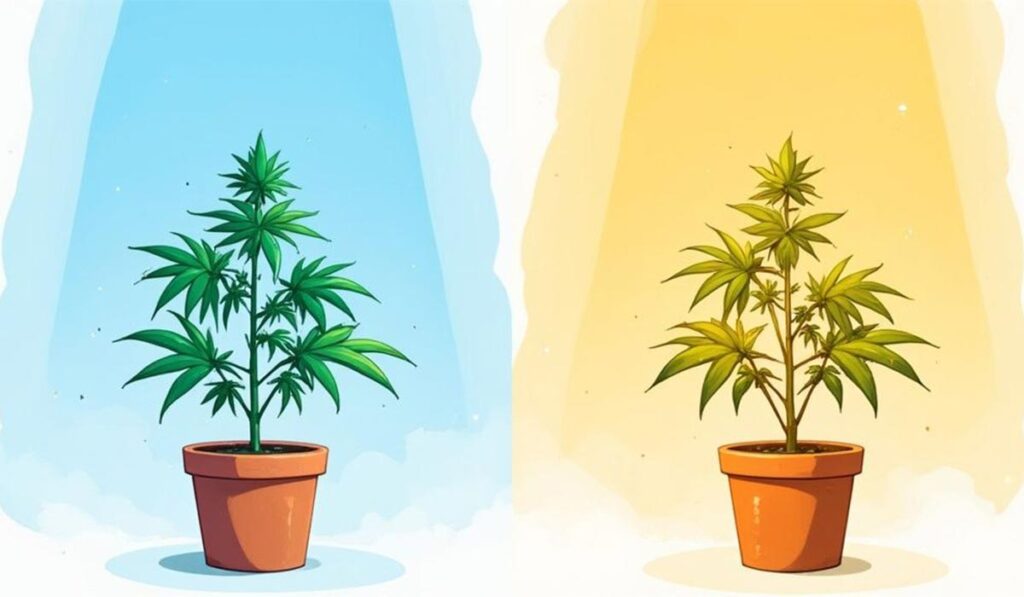
This is where all the plant science and chemical profiles start to matter in the real world. Picking the right strain isn’t just about knowing the difference between Indica and Sativa; it’s about matching a strain’s unique chemistry to what you want to achieve, whether that’s relief from a specific ailment or simply enhancing an experience.
For many medical users, Indica’s deeply relaxing body effects make it a go-to for managing things like chronic pain, muscle spasms, or a restless night. On the flip side, the energizing and uplifting nature of Sativas is often what people managing depression, chronic fatigue, or even ADHD are looking for to help boost focus and motivation.
Matching the Strain to the Moment
The same kind of thinking applies to recreational use. It really comes down to what you’re doing and the vibe you’re after.
An Indica-dominant strain is often the perfect choice for unwinding after a long week. Think of it as your companion for a quiet night in, helping you melt into the couch with a good movie or your favorite playlist. A practical example is using a strain like Granddaddy Purple before bed to help with insomnia. A strain heavy in the terpene myrcene, for example, is well-known for dialing up the relaxation.
A Sativa-dominant strain, however, might be just what you need for a social gathering or a creative session. Its bright, euphoric effects can help get conversations flowing, break through a creative block, or just make a sunny hike that much more amazing. For instance, someone might choose Sour Diesel to stay energized and focused while cleaning the house. Strains with a lot of limonene often deliver that classic mood-lifting kick.
The rise of hybrid strains has truly changed the game, offering nuanced effects that pull from both sides of the spectrum. Breeders are now able to fine-tune profiles, blending Indica’s calm with Sativa’s clarity to create an experience for almost any situation imaginable.
Cultivation and Consumer Trends
The physical differences between Indica and Sativa plants play a big role in what’s available on the market. Indicas are a favorite for indoor growers because they stay short and compact, with a quick flowering time of just 6 to 8 weeks. Sativas, which can stretch up to 4.5 meters tall and take 8 to 12 weeks to mature, are a much bigger commitment for indoor setups.
This practical reality shapes what consumers choose. Medical users often lean toward Indica-dominant strains for pain, anxiety, and insomnia—conditions affecting 20-30% of patients in some medical cannabis registries. At the same time, high-THC Sativas are a cornerstone of the recreational scene for their powerful, energetic high. You can dive deeper into these findings from the National Center for Biotechnology Information.
At the end of the day, finding what works for you is a personal journey of discovery. You might find your preferences shift depending on your mood or the occasion. For anyone ready to start exploring, visiting a quality cannabis dispensary is the best way to see the incredible variety out there and get some guidance from people who know their stuff.
Answering Your Top Indica vs Sativa Questions
Even with a solid grasp of cannabinoids and terpenes, a few classic questions about indica and sativa always seem to surface. Let’s tackle them head-on and clear up any lingering confusion.
Are All Indicas Really “In-Da-Couch” and All Sativas Uplifting?
That used to be the rule of thumb, but it’s not so simple anymore. While those are the classic, old-school effects, decades of enthusiastic cross-breeding have blurred the lines. The name on the bag is far less important than the plant’s actual chemical makeup.
Today, your experience is really dictated by a complex interplay of cannabinoids and terpenes. It’s entirely possible to find a sativa that chills you out or an indica that gives you a little boost. A great example is the strain Green Crack; though its name suggests intense energy, it’s a sativa that many users find helps them focus without anxiety.
Here’s the bottom line: you have to look past the label. The most reliable way to know what you’re getting into is to check the lab report or chat with a knowledgeable budtender about the specific terpene profile.
What Exactly Is a Hybrid Strain?
A hybrid is simply a cannabis plant that has both indica and sativa parents. Breeders intentionally cross-pollinate the two, a practice detailed on sites like Wikipedia, to create something new that cherry-picks the best traits from each lineage. Think of getting an indica’s fast flowering time combined with a sativa’s cerebral high.
These strains can lean heavily one way (indica-dominant or sativa-dominant) or be a true 50/50 split. Practical examples include Blue Dream (sativa-dominant hybrid known for gentle euphoria) and Girl Scout Cookies (indica-dominant hybrid prized for full-body relaxation with a cerebral buzz). Because they offer such a massive spectrum of effects, hybrids have become the most common and diverse category of cannabis on the market.
How Much Do Terpenes Actually Matter?
A lot more than most people think. Terpenes are the fragrant oils that give cannabis its signature aromas, from earthy pine to citrusy lemon, but their job doesn’t stop there. They are major players in how a strain actually makes you feel.
For instance, myrcene is famous for its sedating, relaxing properties, while limonene often contributes to a brighter, more elevated mood.
This is all part of the “entourage effect,” where terpenes and cannabinoids like THC work together, enhancing and modifying each other’s effects. If you really want to predict how a strain will hit you, understanding its dominant terpenes is your best bet. For more deep dives into cannabis science, check out our other articles on the Elevation Headquarters blog.
At Elevation Headquarters, we’re all about guiding you to the perfect product for your unique needs. Come explore our curated selection and see how you can elevate your experience today at Elevation HQ Cannabis Store.

